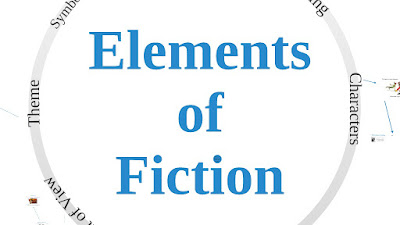Mastering Tone in Creative Writing: Shaping Atmosphere, Characters, and Themes
By Olivia Salter
Tone is one of the most powerful yet subtle tools in creative writing. It influences the reader’s emotional response, builds atmosphere, and adds depth to characters and themes. A writer's tone isn’t just about word choice—it’s about the mood, the attitude, and the voice that resonate throughout the story. Whether you’re aiming to craft a suspenseful thriller or a heartwarming romance, mastering tone can make all the difference in how your story is perceived and experienced. Let’s explore some key ways in which tone can enhance your creative writing.
1. Creating Atmosphere
The tone of your writing plays a significant role in establishing the mood of your story. Whether you want to evoke tension, joy, dread, or tranquility, the tone you adopt helps set the emotional stage for your readers. For example, a suspenseful tone—with short, clipped sentences and vivid description—can keep readers on edge, heightening anticipation. In contrast, a lighthearted tone filled with humor and playful language can create an inviting, feel-good atmosphere. Through tone, you control how the reader feels as they journey through your narrative.
2. Revealing Character Depth
Tone is an essential element in character development. The way a character speaks or thinks can reveal layers of their personality, motivations, and inner struggles. A sarcastic tone might indicate a character’s bitterness or cynicism, while a thoughtful, melancholic tone could reflect deep-seated regret or sadness. Tone also helps differentiate characters from one another. By paying close attention to how each character’s tone is conveyed—whether through dialogue or internal monologues—you can make them more distinct and memorable.
3. Advancing Plot
Tone doesn’t stay static; it can shift as the story progresses, reflecting changes in the plot. A tone that starts optimistic may gradually become darker and more desperate as the protagonist faces mounting challenges. Conversely, a tense or somber tone can lighten as obstacles are overcome and resolution is reached. These tonal shifts can mirror the emotional rollercoaster of your story, enhancing the reader's experience and making the plot’s progression feel more dynamic and organic.
4. Emphasizing Theme
The overall tone of your story can strengthen its themes. A dark, brooding tone, for instance, can amplify themes of loss, betrayal, or moral ambiguity. On the other hand, a hopeful or inspiring tone might elevate themes of perseverance, love, or redemption. When your tone aligns with the underlying message of the story, it reinforces the themes in a way that resonates deeply with readers. Tone becomes the vessel through which your theme emotionally impacts the audience.
5. Engaging the Reader
One of the greatest strengths of tone is its ability to engage readers emotionally. A well-chosen tone can make readers laugh, cry, or sit on the edge of their seats. A dramatic tone heightens tension, making readers fear for the characters’ fates, while a tender, romantic tone can draw readers into the emotional highs and lows of a love story. The more emotionally invested your readers are, the more immersed they become in the world you’ve created. Tone is the invisible thread that ties them to your story.
6. Defining Style and Voice
Tone is also an intrinsic part of your unique writing voice and style. The way you blend humor with seriousness, or how you balance informal dialogue with formal narrative, can set your work apart from others. Your tone establishes the overall feel of your story, whether it's quirky, somber, gritty, or whimsical. It’s part of what makes your writing unmistakably yours. By refining your tone, you create a signature style that readers will recognize and come back to.
7. Consistency and Intentional Shifts
While tone is a flexible tool, maintaining consistency is crucial unless a deliberate shift is warranted. Abrupt, unintentional changes in tone can confuse readers and pull them out of the story. For example, moving from a tragic tone to a comedic one without purpose may feel disjointed and jarring. On the other hand, intentional shifts in tone can create powerful moments. A serious, intense scene followed by a lighthearted one can offer relief and balance, keeping readers emotionally engaged without overwhelming them.
How to Monitor Tone in Your Writing
One of the best ways to check your tone is by reading your work aloud. Hearing your words can make subtle tonal shifts more apparent, allowing you to smooth out any inconsistencies. Pay attention to the emotional weight behind your language—does it match the scene’s mood? Are your characters’ voices distinct and authentic? Revisiting your tone as you revise can ensure your writing maintains a consistent emotional pull.
Conclusion
Tone is much more than the mood of a single scene—it’s the emotional undercurrent that flows through every aspect of your story. From building atmosphere to revealing character depth, from reflecting plot changes to reinforcing themes, tone is a versatile and indispensable tool in creative writing. By mastering tone, you can craft stories that not only entertain but also resonate deeply with readers, leaving a lasting emotional impact.



